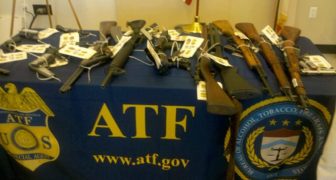By Home Defense Gun staffer Bob
The Importance of Self-Defense Handgun Practice
One of the first things a person learns after they buy a home defense gun is the absolute necessity of practice. Regardless of what it looks like in the movies it’s pretty darn tough to shoot a pistol well. Personally, I’ve always been amazed at how fast handgun skill falls off without constant maintenance.
For the better part of my adult life I’ve been lucky enough to fit in pistol practice several times a week. Even with all that shooting I find that it takes a while to get back in the groove with a gun I haven’t used in a while, or to find the groove with a new gun. So if a hillbilly like me with all that time on his hands has a hard time keeping his pistol skills up-to-date, what’s the average shooter supposed to do?
To begin with, you need to make sure you are getting the maximum amount of benefit from the time you have available. Some of this doesn’t even have to be range time. Dry firing is a fantastic way to learn trigger control and the technical qualities of your grip. These are two items that should be beat into your muscle memory with rote repetition. Squeezing a trigger and holding a gun are two things you don’t want to have to think about. A near reflex-like quality is what you’re trying for and a half-hour or so a night of dry-firing will build this up in a hurry. Obviously, these dry-firing sessions are also a great time to break in a new holster or practice your draw.When it comes to concealed carry guns the draw is just as important as trigger control or grip. There are a few models of gun on the market these days with owner’s manuals that tell you that they can be dry-fired as much as you like without damage. In my experience this is more or less wishful thinking on the part of gun manufacturers. My advice is to buy some snap caps regardless of handgun model and use them. It’s a small expense compared with getting the pistol repaired.
Live fire practice is another area you want to milk for everything it’s worth. You may have noticed that marathon runners don’t tend to spend a lot of time doing pushups. Runners run to get better at running; if you want to be good at something you should practice that specific skill as well. A lot of shooting ranges don’t allow drawing. If you’re trying to get a feel for your self-defense rig, banging away with it from a perfect Weaver stance without practicing your draw isn’t going to teach you what you need to know. It’s absolutely essential to find some place to practice where you can learn a smooth draw, speed reloads, shooting from funny angles and off-hand draws. If this means leaving a legitimate range for a gravel pit, it’s worth it.
Regardless of how much time you spend with dry-fire practice, live fire time is always going to be the heart and soul of shooting practice. An unloaded gun will never command the same respect from its user that a loaded gun does. Whether we like to admit it or not, live fire practice is different from dry-firing. We’re all a little slower and more cautious when there is a round in the chamber. This is why live fire is so important.
A shooter needs to practice at short range with the weapon in odd positions to discover where their brass flies. Magazines or speedloaders with live rounds have a different feel to them, at least in the mind, and all the fumbling with them must be ironed out. Perhaps the biggest difference between live fire and dry-firing is recoil. That pistol that sits in your hand like a brick in the living room bounces around like a jackrabbit out on the range. A shooter can always learn to deal with this, but live fire is always going to be the method for this learning.
Growing up in Montana I had access to almost every kind of gun imaginable and a hundred good reasons to practice with rifles and shotguns to get better in the hunting fields. I did fit in a lot of rifle and shotgun practice as a kid, but the one skill my grandfather always pushed me to work on was pistol shooting. As my grandpa saw it a hunter could miss a deer, shrug it off, make corrections to their form and go find another deer.The pistol was a different story, a pistol is what you carry to save your butt or save those close to you. If you aren’t good with a pistol you may never get a second chance to fix your mistakes. I know practice is a hassle and live fire practice isn’t exactly cheap or convenient these days, but it’s important to remember what you bought that gun for. If you and that gun can’t operate well when you need to, then you haven’t really gotten anywhere.


Speak Your Mind